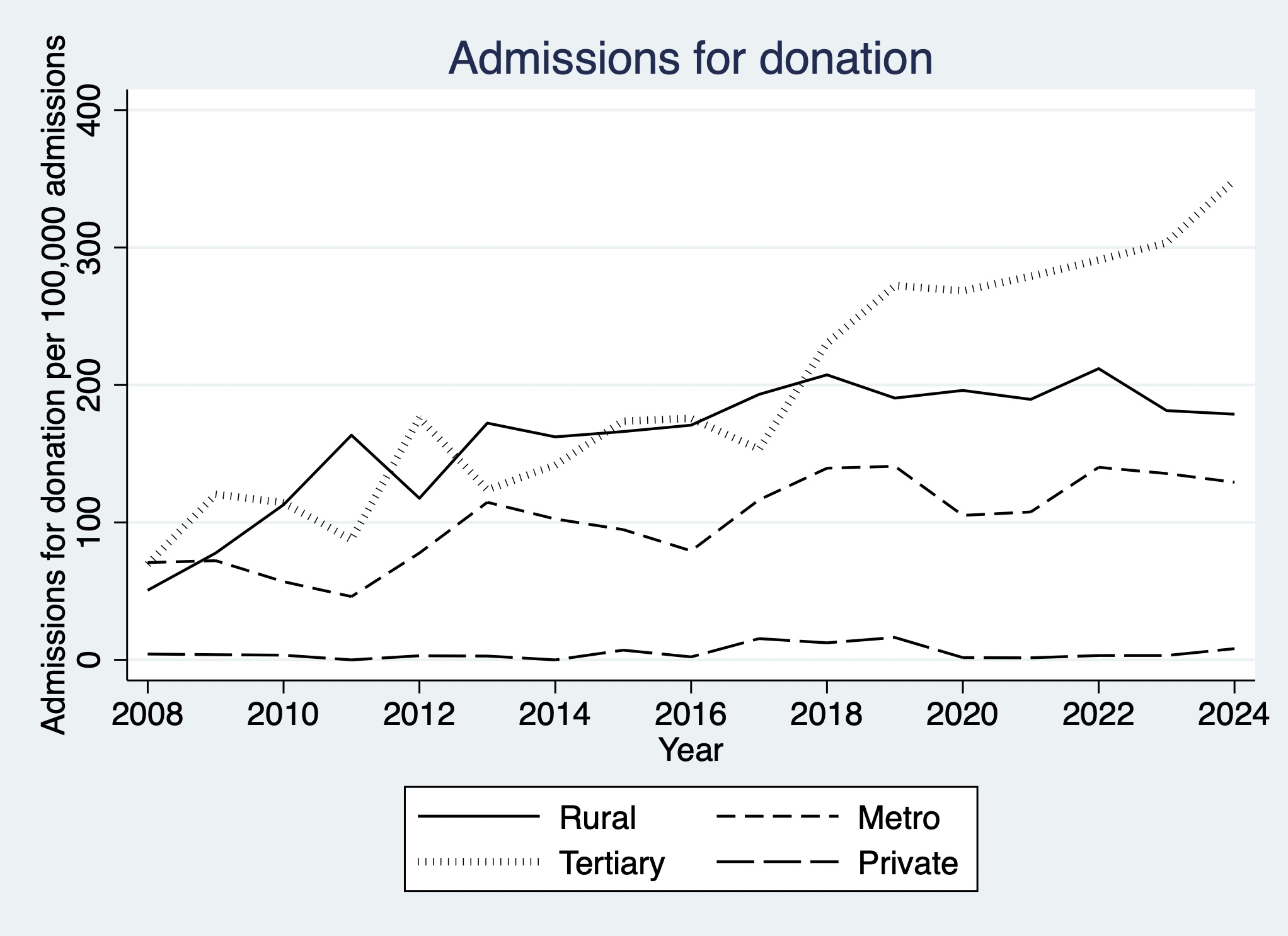Admissions to intensive care for organ donation in Australia since 2008
Dashiell Gantner1,2,3, Helen Opdam4,5, Kristen Willmot1,2, David Pilcher1,3,6.
1Department of Intensive Care, Alfred Health, Melbourne, Australia; 2DonateLife Victoria, Melbourne, Australia; 3Australian and New Zealand Intensive Care Research Centre, Monash University, Melbourne, Australia; 4Department of Intensive Care, Austin Health, Melbourne, Australia; 5Organ and Tissue Authority, Canberra, Australia; 6Centre for Outcome and Resource Evaluation, Australian and New Zealand Intensive Care Society, Melbourne, Australia
Background: In 2008, a comprehensive policy reform was implemented across Australia to increase deceased organ donation. Since then, the nationwide rate of donation has increased from 12.1 to 19.4 donors per million population per year. One of the reform strategies was to improve potential donor identification, but it was unknown whether the increase in rate was due to improved identification of patients already admitted to intensive care units (ICUs), or to increased admission to ICUs of patients at end of life. This study analyses trends in admissions to ICUs explicitly for the consideration of organ donation over 17 years following the reform.
Methods: We conducted a retrospective analysis of all patients admitted to ICU for consideration of organ donation between 2008 and 2024 . Data were drawn from the Australian and New Zealand Intensive Care Society Adult Patient Database. Annual admission rates were compared, adjusting for type of hospital. Linear regression and pairwise comparisons were used to evaluate temporal trends and the differential changes between different hospital types.
Results: Between 2008 and 2024, 2,506,626 patients were admitted to Australian ICUs contributing to the registry, of whom 3,078 were admitted for consideration of organ donation. The overall rate of such admissions increased more than threefold (from 50 to 178 per 100,000 admissions per year, p<0.01). Tertiary hospitals showed significantly greater increase than rural, metro or private hospitals (p<0.01; Figure 1).

Conclusion: The Australian national reform has been associated with a sustained increase in ICU admissions for consideration of organ donation, although significant unexplained variation exists between hospital type. This increase is consistent with international experience, and suggests that structured, nationally coordinated policy interventions can improve access to donation pathways and potentially increase the availability of transplantable organs.
[1] Intensive Care
[2] Organ donation
[3] Registry
[4] Admission policy